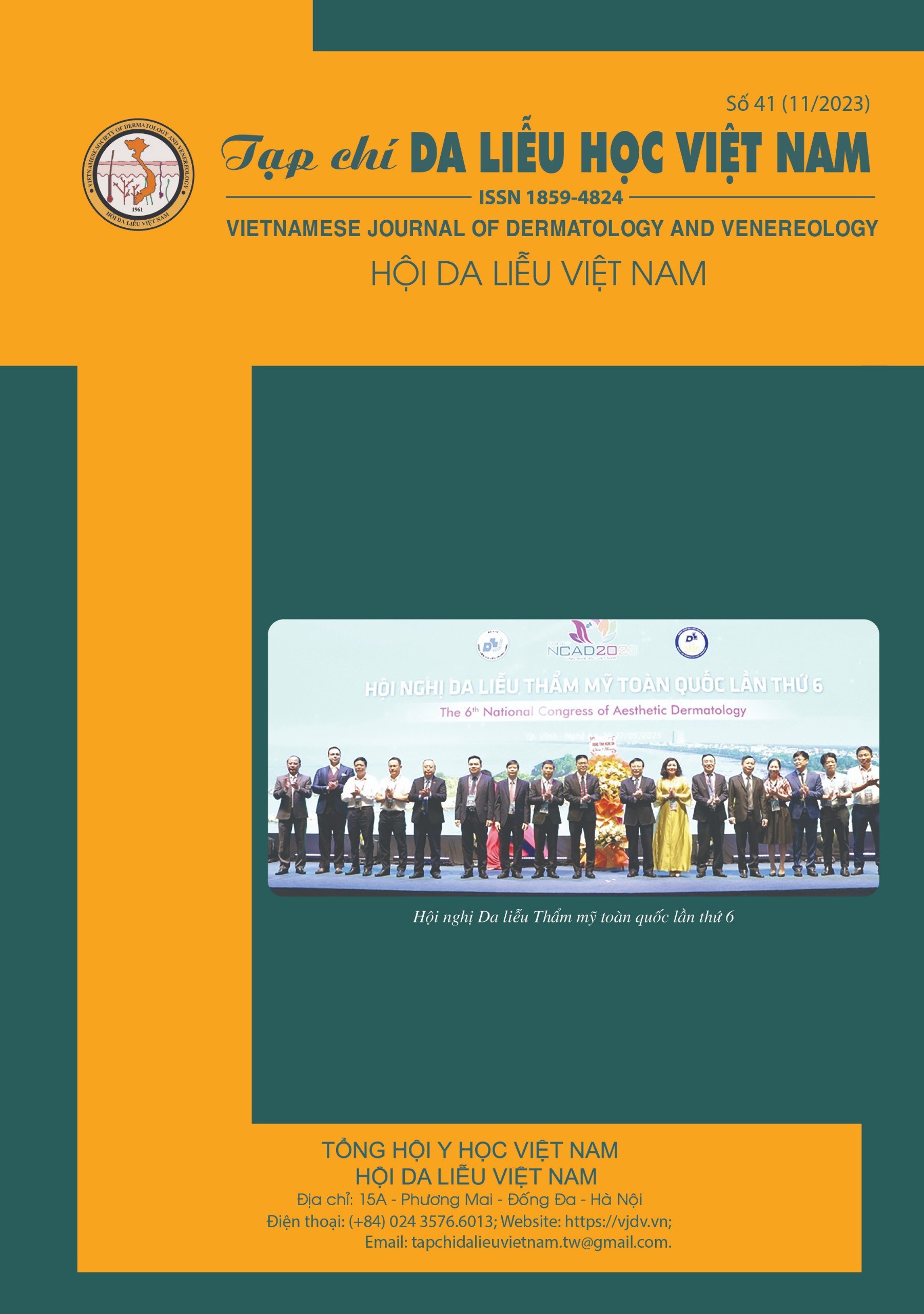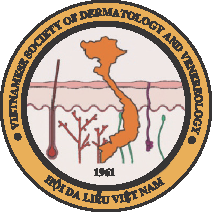ĐẶC ĐIỂM IGE ĐẶC HIỆU DỊ NGUYÊN Ở TRẺ EM VIÊM DA CƠ ĐỊA
DOI:
https://doi.org/10.56320/tcdlhvn.41.117Keywords:
atopic dermatitis, specific IgE test.Abstract
Objective: This study aims to describe the characteristics of allergen-specific IgE and its relationship with clinical features in 2- to 12-year-old children diagnosed with atopic dermatitis at the National Hospital of Dermatology and Venereology.
Material and methods: This descriptive cross-sectional study was conducted on 70 children aged 2 to 12 years with atopic dermatitis at the National Hospital of Dermatology and Venereology from September 2022 to August 2023.
Results: The prevalence of positive specific IgE in children aged 2 to 12 years with atopic dermatitis was 71.4%. The two allergen groups with the highest positive rates were the food allergen group (55.7%) and the house dust mite allergen group (30%). The top three allergens with the highest positive rates were house dust mite D. farinae (28.6%), egg white (28.6%), and house dust mite D. pter (25.7%). However, there was no significant correlation between specific IgE levels and the severity or stage of atopic dermatitis.
Conclusion: The specific IgE test is a simple and easy-to-implement method with no known side effects, which can help identify potential allergens that should be avoided by patients with atopic dermatitis. Nevertheless, it does not appear to be correlated with the severity or stage of atopic dermatitis. Therefore, it is advisable to complement this test with other diagnostic methods before providing recommendations regarding dietary and activity modifications.





